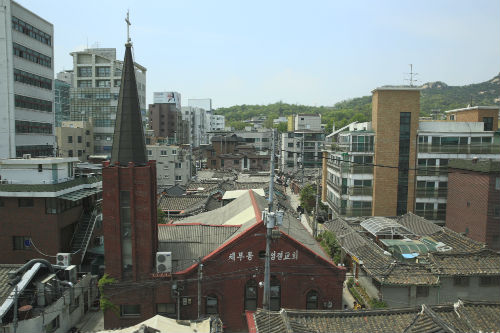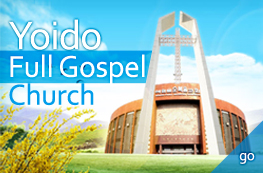Chebudong Church in Jongno-gu, Seoul, preserved its location for nearly a century. It survived oppression under the Japanese occupation and the Korean War. But in recent times, modern economic logic has threatened its security.
As gentrification proceeds, it has been decided to transfer ownership of Chebudong Church (Rev. Yeom Hui-seung) to the city of Seoul at the end of this month. The Seoul government, recognizing the high architectural significance of the church building, decided to purchase it last year. Built in French brickwork style during the Japanese occupation, the building later was expanded using English and American bonds. For this reason, it is worth preserving as a modern brick construction.
It is not just the building that is the legacy of Chebudong Church. Its ministry has borne many fruits, small and large, in the history of the Korean church. In 1924, the congregation began as a branch church of Mugyojeong Church (today Chungang Evangelical Holiness Church), and later purchased a thatched-roof house at the current location. In 1931, the present building was constructed and the church moved here.
Rev. Kim Su-jin of the Korean Church History Research Institute said, “During that time, Chebudong Church had a worship service for children every Friday, which was the beginning of the Sunday school. Later the membership grew to more than 200, and the Japanese colonial government started keeping watch on the church.” In 1943, the colonial government finally closed the church down, instead operating a bread factory in the building. In September 1945, after National Liberation, the church members reclaimed and renovated the building, and the church became fully involved in evangelism and education.
“Hwalcheon,” the monthly magazine of the Korean Evangelical Holiness Church, published since 1922, introduced the church in 1968 as a model case for its Sunday school. At that time, there were 180 child members with 25 teachers. The Chebudong Sunday School had a library and was the first KEHC church to hold a winter Bible School.
Once again in 1968, “Hwalcheon” recognized the church for its effective organization and friendly atmosphere. It had various mission groups and active age groups. It invited elderly neighbors, served them meals and held gift-giving events. The record says that the church’s efforts changed its neighbors’ thinking about Christian churches.
Chebudong Church also endeavored to plant churches: It planted Shinchon Church (Rev. Lee Jeong-ik) in 1955, and Hwapyeong Church (Rev. Shin Man-gyo) in Euijeongbu in 1982.
The church members and pastors built a new building in Deungchon-dong and moved there in 1997. The name was changed to Yeonggwang Church. However, they wished to preserve the old building in Chebudong, so Rev. Yeom Hui-seung, the current pastor of the same denomination, continued his ministry there, and the name “Chebudong Church” was kept. In this way, Chebudong Church was able to preserve its location and ministry.
With the region developing into as a commercial area, however, the price of real estate soared more than 10 times during the past 15 years. The environment always bustles with tourists. But many residents have left the area, and the church has fewer and fewer members. Therefore the decision was made to move to another area.
The church members worried that their move might result in the demolition of the church. So they proposed that Seoul city purchase the buildings and land. Seoul accepted this proposal, and will preserve Chebudong Church (photo) as one of Seoul’s Future Assets. The last step in the ownership transfer process will take place later this month.
Prof. Park Myeong-su (Seoul Theological University Research Institute for Modern Christianity) said, “It is gratifying that the city of Seoul has purchased the church building to preserve the characteristics of modern architecture. At the same time, it is sad that this church with its long, thriving history and good influence cannot stand up to gentrification but must move out of the downtown area.”
Reporter Lee Saya (Isaiah@kmib.co.kr), with Yeara Ahn-Park (yap@kmib.co.kr)
Photo by intern reporter Jun Ho-Kwang
Click here for the original article in Korean
92-Year History of Chebudong Church To Be Preserved
2016-05-17 17:50



